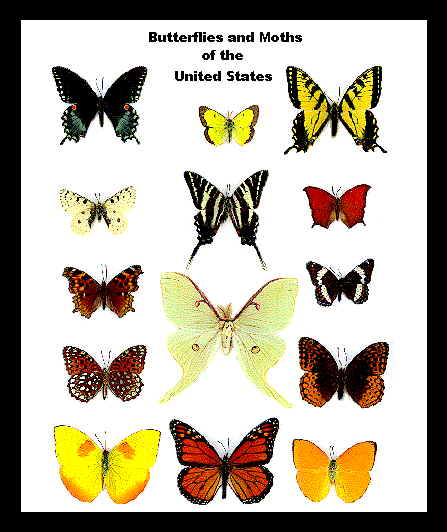INTRODUCTION
Butterflies go wherever they please and please wherever they go. They are messengers of nature, not only adding brilliance to their surroundings but also pollinating flowers and revealing the healthiness of our communities. Historically, butterflies have been revered in art and lore but otherwise have been ignored. Today, however, we are beginning to realize the many benefits of these smaller wildlife forms.
The role of butterflies is important in our natural world. Their sheer numbers supply a vast food source for predators, and they are significant plant pollinators. If plants are not pollinated, seeds and fruits are not produced.
With their acute sensitivity to pesticides and toxins, their presence, diversity and relative abundance indicate the overall well-being of our ecosystems. Their message is simple: A healthy community usually has a large number and wide array of butterfly species; a contaminated or altered community doesn't.
Butterfly-watching ranks high among our outdoor pleasures, right alongside enjoying birds and wildflowers. The aesthetic appeal of these winged creatures is even more significant once we realize that butterflies neither sting, bite, nor transmit disease.
BUTTERFLIES ARE UNIQUE
Butterflies are a special group of insects that arouses visions of bright color fluttering amidst sun-drenched flowering meadows. Their color emanates from thousands of tiny, shinglelike scales in rows delicately attached by twin stalks to a parchmentlike wing membrane. If you gently rub your finger across a butterfly wing, these stalks break and the scales brush off like dust.
Two types of color arise from the wing-pigmented and structural or iridescent hues. Pigmented colors such as red, orange, yellow and brown come from the actual color pigment of each scale. In contrast, the iridescent, metallic colors such as blue, green, violet, silver and gold are created by minute structures on the scale surface that bend light and reflect it.
To further understand what makes butterflies unique, you might consider the miracle of metamorphosis. The four stages in butterfly metamorphosis are egg, larva (caterpillar), pupa (chrysalis) and adult. In the spirit of the Ugly Duckling, metamorphosis begins when the fertilized egg hatches into a small caterpillar. The caterpillar becomes an undulating eating machine, continually searching for food and appearing to grow larger by the hour. After finally getting its fill or devouring all available food in the area, the caterpillar slowly molts into an inactive, mummy-like stage called the chrysalis. Within this waxy pupal case, the mystical transformation into adulthood occurs. As the chrysalis case splits, the wrinkled-winged adult butterfly emerges. After stretching and drying, the butterfly takes to the air in search of a mate so the cycle can be repeated. The miracle is complete; the ugly caterpillar has become a beautiful airborne ambassador of nature.
Butterflies of the Garden
There are several butterflies that common to the area. The followwing list are all that I believe can be found in S.E. Minnesorta.

BUTTERFLIES AND MOTHS
Endangered
Erynnis persius (Scudder) persius dusky wing
Hesperia comma assiniboia (Lyman) assiniboia skipper
Hesperia uncas W.H. Edwards uncas skipper
Lycaeides melissa samuelis Nabokov Karner blue (E)
Oeneis uhleri varuna, (W.H. Edwards) Uhler's arctic
Threatened
Hesperia dacotae (Skinner) dakota skipper
Hesperia ottoe W.H. Edwards ottoe skipper
Oarisma garita (Reakirt) garita skipper
Special Concern
Atrytone arogos (Boisduval & Leconte) arogos skipper
Erebia disa mancinus Doubleday & Hewitson disa alpine
Hesperia leonardus Harris leonardus skipper
Lycaeides idas nabokovi Masters Nabokov's blue
Oarisma powesheik (Parker) powesheik skipper
Pyrgus centaureae freija (Warren) grizzled skipper
Schinia indiana (J.B. Smith) phlox moth
Speyeria idalia (Drury) regal fritillary
![]()
![]()
 Wildflower
Seed For Sale
Wildflower
Seed For Sale